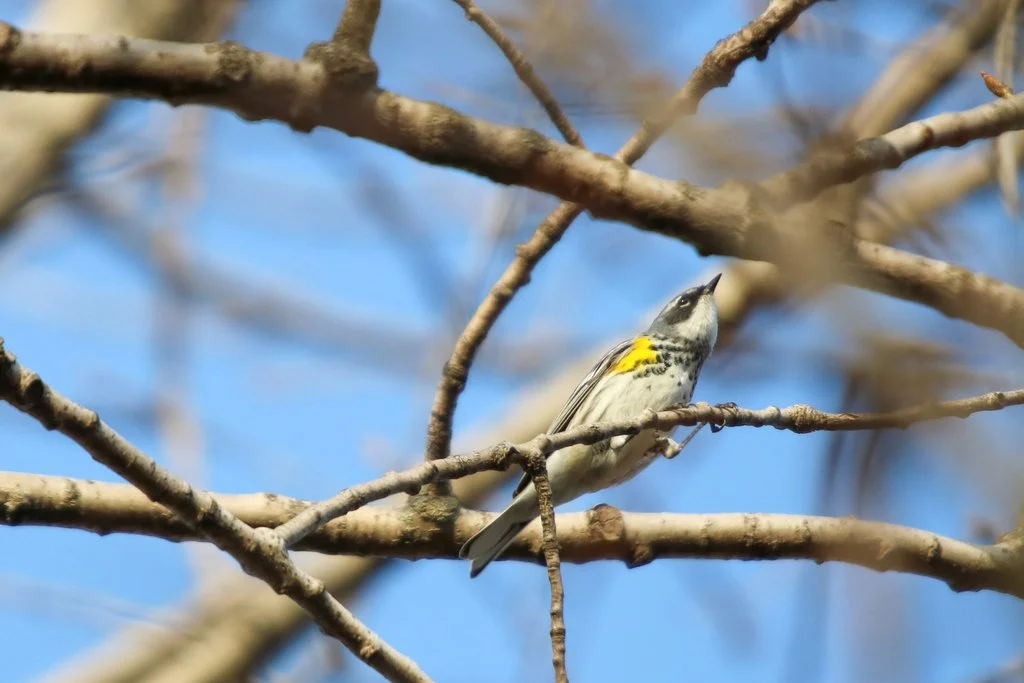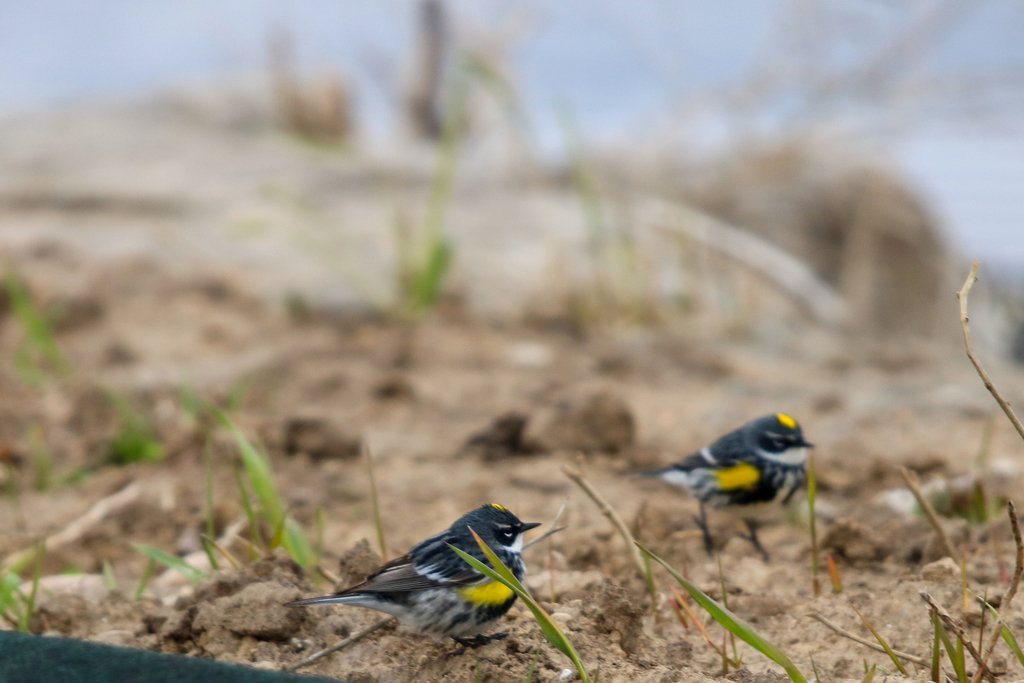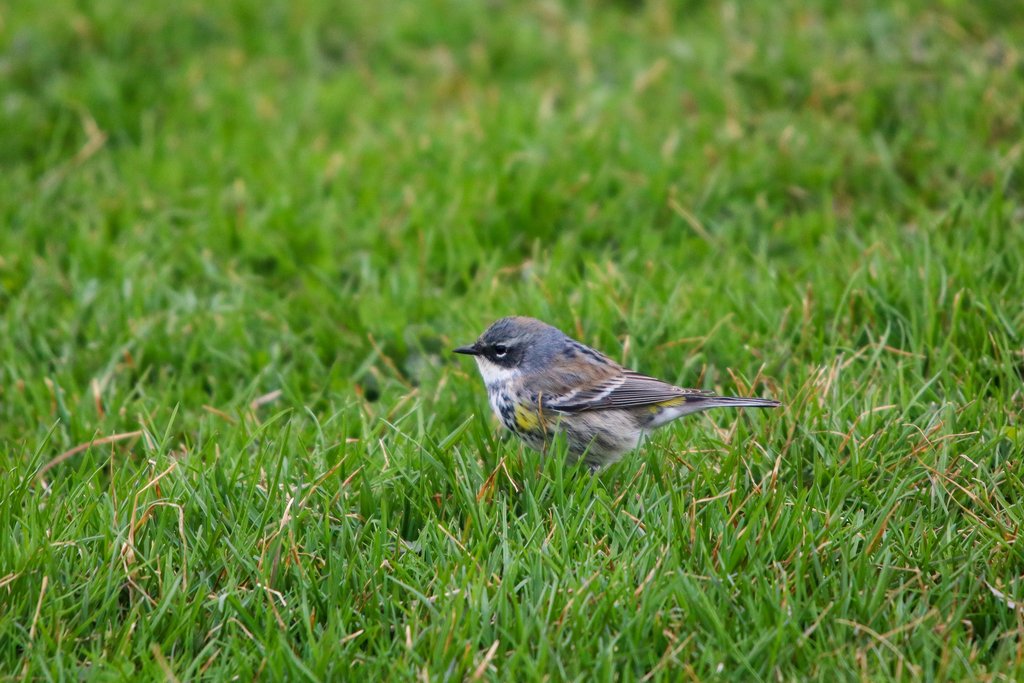Our warblers have long captivated birders with their diversity, bright plumage, fascinating behaviors, and spectacular migrations. And for many in southern Wisconsin, no bird better signals the arrival of spring migration than the cheerful Yellow-rumped Warbler—affectionately known by some as the “butterbutt.”
One of the most abundant songbirds in North America, the Yellow-rumped Warbler is a welcome and familiar sight in woodlands, parks, and backyards. With a hallmark bright yellow rump, bold shoulder patches, and dark breast streaking, it’s a handsome bird that’s easy to spot. Add in its cheery chee chee chee call and fluttery, energetic movements, and you’ve got a bird that’s hard not to love.
Two male Yellow-rumped Warblers forage on bare ground (photo by Jeff Steele).
Often our first warbler to arrive in early spring, the yellow-rump’s bubbly presence kicks off the warbler wave that peaks in mid-May (follow their movements throughout the year in this excellent animation created by eBird observations).
There are actually two subspecies of Yellow-rumped Warblers found in the United States: the eastern Myrtle Warbler and the western Audubon’s Warbler. In our area, we see the Myrtle Warbler, which breeds in the boreal forests of Canada and Alaska before migrating south for the winter. Audubon’s Warbler, meanwhile, breeds in western mountains and winters in the southwestern US and the highlands of Mexico.
Yellow-rumped Warbler in grass (photo by Jeff Steele).
Our yellow-rumps are unusually hardy for a warbler, and thanks to their versatile, feeding habits, many don’t travel far south in winter. Active and animated, yellow-rumps are often seen flitting through shrubs or perched high in evergreens, always on the move. You might see one dart into the air like a flycatcher, a behavior called “sallying,” to snatch an insect mid-flight. Though primarily insectivorous, these warblers have flexible diets and often switch over to eating berries, especially in the fall (including wax myrtle berries which gives our subspecies its name). They’ve even been seen pecking at poison ivy berries—one of the few birds that can digest them.
Though plentiful, this adaptable and dynamic warbler deserves a closer look. It’s easy to take the Yellow-rumped Warbler for granted, but its hardiness, versatility, and bright, cheerful personality make it a true spring favorite. If you’re interested in an opportunity to view a “butterbutt,” consider joining us for a guided tour as we explore the habitat diversity at Faville Grove West on Saturday, April 26 from 7:30–10:30am.
Written by Jeff Steele, Faville Grove Sanctuary land steward
Cover photo by Jeff Steele. A Yellow-rumped Warbler is perched on a bare branch overhead.







